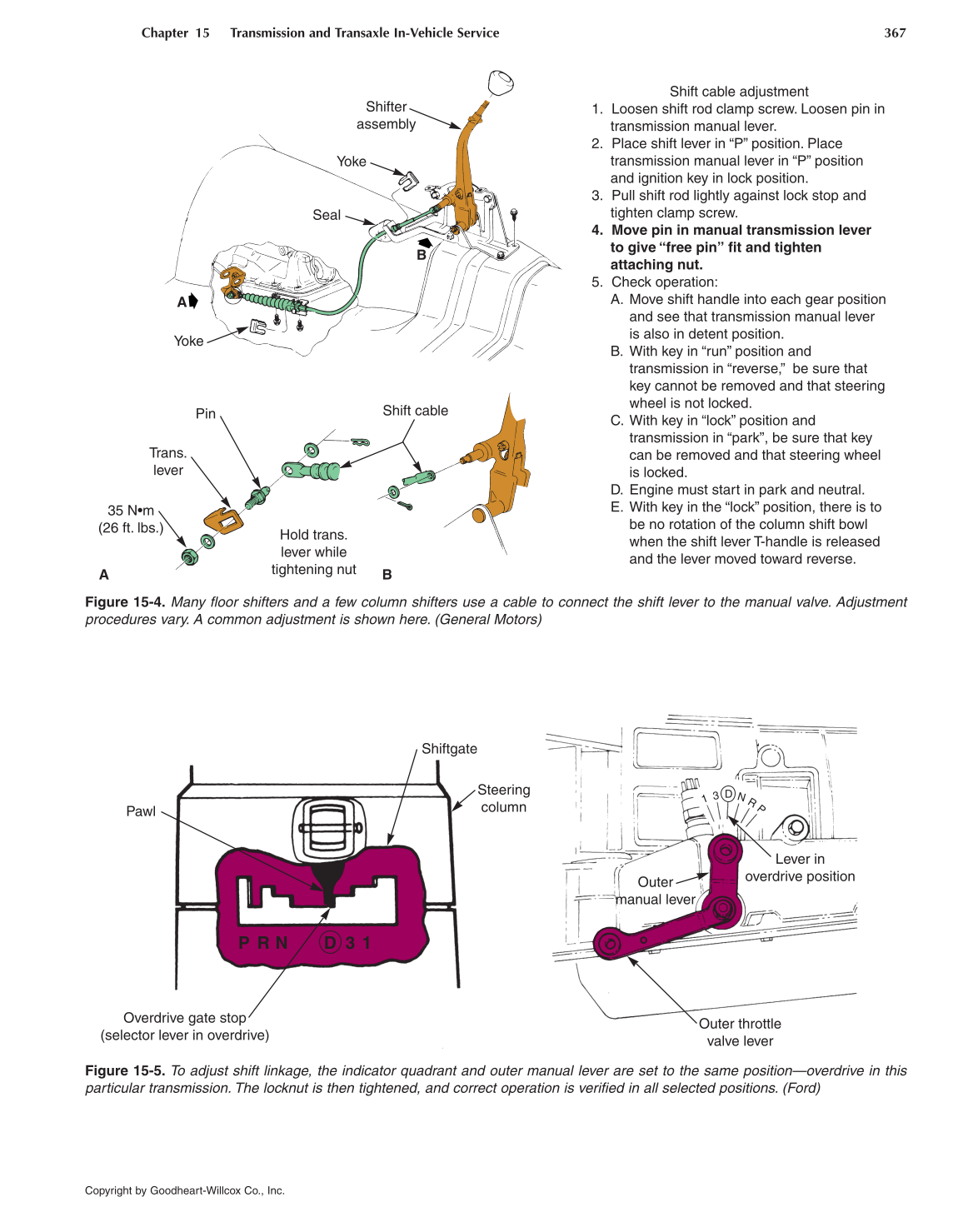Copyright by Goodheart-Willcox Co., Inc.
Chapter 15 Transmission and Transaxle In-Vehicle Service 367
Shifter
assembly
Yoke
Yoke
Seal
35 N•m
(26 ft. lbs.)
Trans.
lever
Pin
Shift cable
Hold trans.
lever while
tightening nut
Shift cable adjustment
1. Loosen shift rod clamp screw. Loosen pin in
transmission manual lever.
2. Place shift lever in “P” position. Place
transmission manual lever in “P” position
and ignition key in lock position.
3. Pull shift rod lightly against lock stop and
tighten clamp screw.
4. Move pin in manual transmission lever
to give “free pin” fit and tighten
attaching nut.
5. Check operation:
A. Move shift handle into each gear position
and see that transmission manual lever
is also in detent position.
B. With key in “run” position and
transmission in “reverse,” be sure that
key cannot be removed and that steering
wheel is not locked.
C. With key in “lock” position and
transmission in “park”, be sure that key
can be removed and that steering wheel
is locked.
D. Engine must start in park and neutral.
E. With key in the “lock” position, there is to
be no rotation of the column shift bowl
when the shift lever T-handle is released
and the lever moved toward reverse.
A
B
A B
Figure 15-4. Many floor shifters and a few column shifters use a cable to connect the shift lever to the manual valve. Adjustment
procedures vary. A common adjustment is shown here. (General Motors)
Pawl
Shiftgate
N P D 1 3
Steering
column
Outer throttle
valve lever
Outer
manual lever
1
3 N
R
P
Overdrive gate stop
(selector lever in overdrive)
Lever in
overdrive position
R
D
Figure 15-5. To adjust shift linkage, the indicator quadrant and outer manual lever are set to the same position—overdrive in this
particular transmission. The locknut is then tightened, and correct operation is verified in all selected positions. (Ford)
